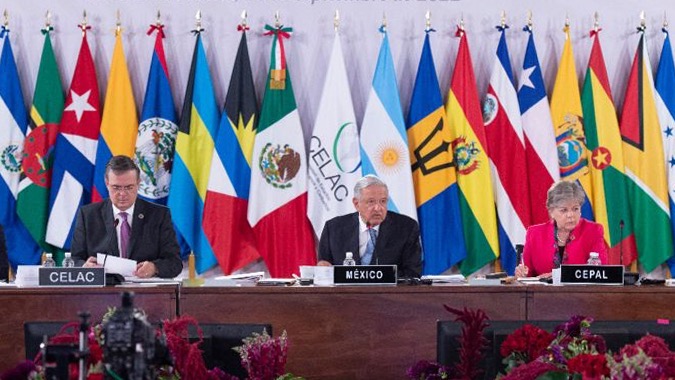Combating the Wildfire Crisis: A North American Approach to a Global Challenge
The escalating climate crisis has dramatically increased the frequency and intensity of wildfires across North and South America, posing a significant threat to ecosystems, communities, and wildlife. The devastating consequences demand a unified, proactive, and innovative approach to wildfire crisis management. This article examines key lessons from North American strategies, offering practical recommendations for bolstering preparedness and response efforts across the Americas.
Understanding the Scope and Urgency: The sheer scale and destructive power of modern wildfires demand immediate attention. Ignoring the urgency of this escalating problem risks catastrophic consequences for both the environment and human populations. A comprehensive understanding of wildfire behavior, predictive modeling, and risk assessment is foundational to effective mitigation.
Proactive Prevention: Investing in preventative measures is significantly more cost-effective than fighting established wildfires. This includes strategic implementation of controlled burns to reduce fuel loads, advanced land management practices tailored to specific ecosystems, and robust public education campaigns promoting fire safety awareness and responsible land use. Early detection technologies, such as advanced satellite monitoring and sensor networks, are crucial components of a proactive strategy.
Strengthening Interagency Collaboration: Effective wildfire management necessitates seamless collaboration between governmental agencies (national, regional, and local), firefighting services, and local communities. Open communication channels, shared data platforms, and clearly defined roles and responsibilities are essential to a coordinated and efficient response. Regular joint training exercises and drills will strengthen interoperability and build capacity for unified action.
Investing in Research and Technology: Continuous advancements in research and technology are paramount. This involves investing in cutting-edge wildfire prediction models, improving early warning systems, developing innovative aerial firefighting technologies (drones, advanced aircraft), and exploring new methods for suppressing wildfires, including bio-engineering techniques and the deployment of smart sensors for real-time fire monitoring.
Building Community Resilience: Engaging and empowering local communities is vital. This requires accessible and comprehensive fire safety education programs, the development of community-based fire response teams, and the creation of robust evacuation plans that address the needs of all residents, including those with disabilities or limited language proficiency. Regular community drills and simulations will enhance preparedness and ensure effective evacuation procedures during emergencies.
Integrating Indigenous Knowledge: Indigenous communities possess invaluable traditional ecological knowledge (TEK) gained through centuries of experience managing fire-prone landscapes. Integrating TEK into modern wildfire management strategies will significantly enhance their effectiveness and promote respectful collaboration. This involves actively consulting with Indigenous leaders and incorporating their wisdom into decision-making processes.
Optimizing Evacuation Procedures: Efficient and accessible evacuation plans are crucial. These plans should account for the specific needs of diverse populations, including those with mobility challenges or language barriers. Regular evacuation drills and clear communication channels during emergencies will minimize confusion and ensure the safety of all residents.
Fostering Regional Cooperation: Cross-border collaboration between North and South American nations is essential to sharing resources, expertise, and best practices. Establishing regional partnerships will facilitate the exchange of information, the coordinated deployment of resources during large-scale events, and the development of common standards and protocols for wildfire management.
Enhancing Firefighting Capacity: Investing in well-trained and equipped firefighting personnel is critical. This includes providing comprehensive training programs, ensuring access to state-of-the-art equipment, and regularly updating firefighting vehicles and technologies to maintain optimal performance. Regular training exercises and simulations will ensure personnel are well-prepared for challenging fire conditions.
Prioritizing Long-Term Ecosystem Restoration: Post-fire ecosystem restoration is paramount for long-term environmental health. This involves implementing comprehensive reforestation programs, supporting organizations dedicated to ecological recovery, and prioritizing biodiversity conservation efforts. Strategic land management practices will help prevent future fires and promote resilient ecosystems.
Raising Public Awareness: Educating the public about the causes and consequences of wildfires, with a focus on the role of climate change, is critical. This involves promoting sustainable land management practices, encouraging responsible outdoor behavior, and advocating for policies that reduce greenhouse gas emissions. Public awareness campaigns can significantly contribute to wildfire prevention.
Advocating for Supportive Legislation and Policies: Stronger legislation and policies prioritizing wildfire prevention, management, and ecosystem protection are essential. This involves actively engaging with elected officials, supporting initiatives promoting environmental sustainability, and advocating for increased funding for wildfire management programs.
Cultivating a Culture of Preparedness: Empowering individuals with the knowledge and skills to address climate and environmental issues is crucial. This includes encouraging participation in workshops, training programs, and volunteer opportunities related to wildfire management and ecological restoration. Promoting community engagement fosters a culture of preparedness and resilience.
Knowledge Sharing and Collaboration: Actively sharing experiences, best practices, and lessons learned across the Americas is paramount. Utilizing digital platforms, conferences, and community events facilitates collaboration and knowledge exchange, driving continuous improvement in wildfire management strategies.
Conclusion: The wildfire crisis demands immediate and collective action. By adopting a multi-faceted approach that incorporates preventative measures, technological advancements, community engagement, and regional cooperation, we can effectively manage wildfires and protect our shared environment. Let’s work together to create a more resilient and sustainable future for all of the Americas.





